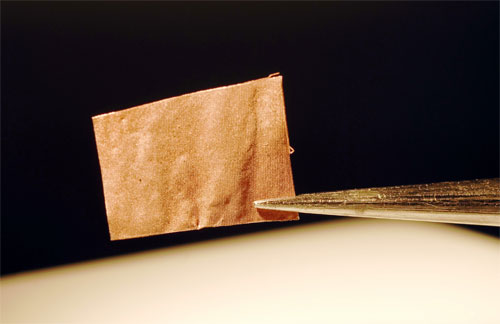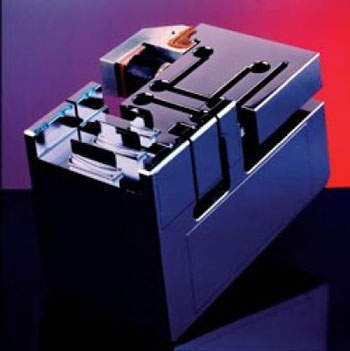Law school to offer nanotechnology course
The science of the small is on the cusp of something big, says professor Doug Sylvester, who�??s offering a nanotechnology course next semester at ASU.
Dec 19th, 2007
Read more
The science of the small is on the cusp of something big, says professor Doug Sylvester, who�??s offering a nanotechnology course next semester at ASU.
Dec 19th, 2007
Read moreRecently published research has shed light on a semiconducting material with zero thermal expansion. The research may play a role in the design of future generations of electronics and optoelectronics that can withstand a wide range of temperatures.
Dec 19th, 2007
Read moreResearchers at E2TAC, the Energy and Environmental Technology Applications Center at the University at Albany's College of Nanoscale Science and Engineering are researching and developing a range of leading edge nanoscale technologies that hold out the promise of realizing greater yields at lower costs across a range of conventional, as well as renewable alternative power generation technologies.
Dec 19th, 2007
Read moreResearchers in New Jersey report development of a new type of non-stick material whose ability to shed liquids like water from a duck's back can be turned on or off simply by flipping an electrical switch.
Dec 19th, 2007
Read moreIn an exclusive interview, Professor Niels Christian Nielsen, winner of this year's Danisco Award, shared his thoughts on the rise of nanotechnology and gave insight on this fascinating new area of the food industry.
Dec 19th, 2007
Read moreUppsala University has been selected for the prestigious EU assignment to lead one of four pilot projects to provide novel models and experience of excellence-driven integrated partnerships at European level.
Dec 19th, 2007
Read moreReflecting upon almost twenty years as head of the European consumers' organisation, Murray highlighted digital rights, nanotechnology and GM technology as the predominant issues to emerge during his tenure.
Dec 19th, 2007
Read moreRoyalty rights to Lyrica ingredient are sold.
Dec 19th, 2007
Read moreResearchers have succeeded in manufacturing a stacked split-ring metamaterial for the optical wavelength range. This layer-by-layer stacking procedure, which can be repeated as often as desired, is capable of producing well aligned three-dimensional metamaterial structures.
Dec 19th, 2007
Read more Tiny copper structures could play key role in next generation of munitions.
Tiny copper structures could play key role in next generation of munitions.
Dec 19th, 2007
Read moreStanford researchers have found a way to use silicon nanowires to reinvent the rechargeable lithium-ion batteries that power laptops, iPods, video cameras, cell phones, and countless other devices.
Dec 19th, 2007
Read moreIsraeli scientists said on Tuesday they have created the world's smallest Bible, fitting a Hebrew-language version of the holy book on a gold-coated silicon chip smaller than a pinhead.
Dec 18th, 2007
Read moreThe ISIS Second Target Station Project at the STFC Rutherford Appleton Laboratory in Oxfordshire achieved a major milestone on Friday December 14, at the first attempt and two days ahead of schedule. Protons were successfully extracted into the new proton transfer beamline from the existing ISIS accelerator and delivered to the new target station.
Dec 18th, 2007
Read moreA new material, nano flakes, may revolutionize the transformation of solar energy to electricity.
Dec 18th, 2007
Read more By means of X-ray interferometers, lengths down to the mm range can be measured with a resolution of less than one nm.
By means of X-ray interferometers, lengths down to the mm range can be measured with a resolution of less than one nm.
Dec 18th, 2007
Read moreThe Nano-Science Center at the University of Copenhagen has been chosen to coordinate research funding from the European Unions Seventh Framework Programme.
Dec 18th, 2007
Read more